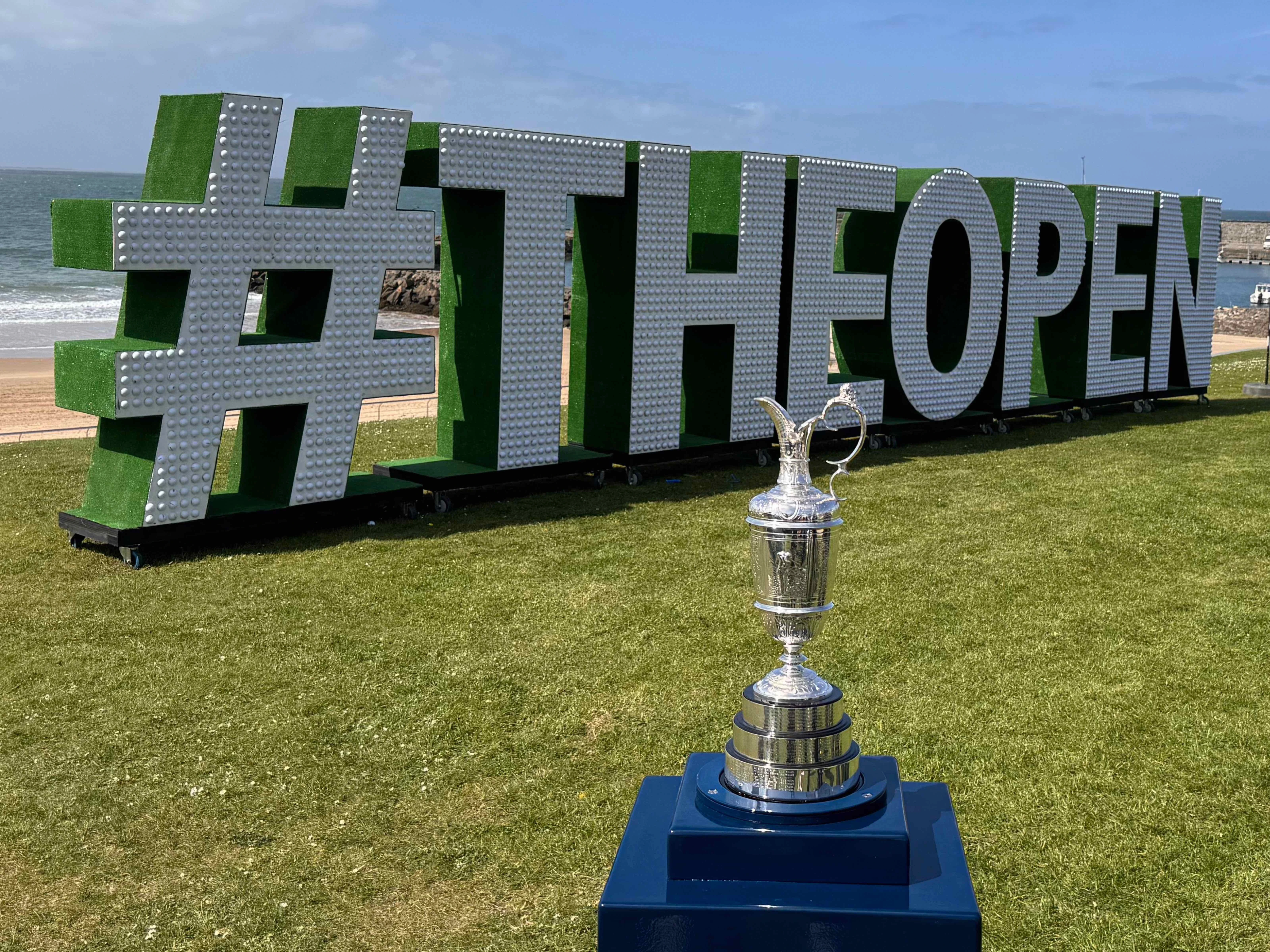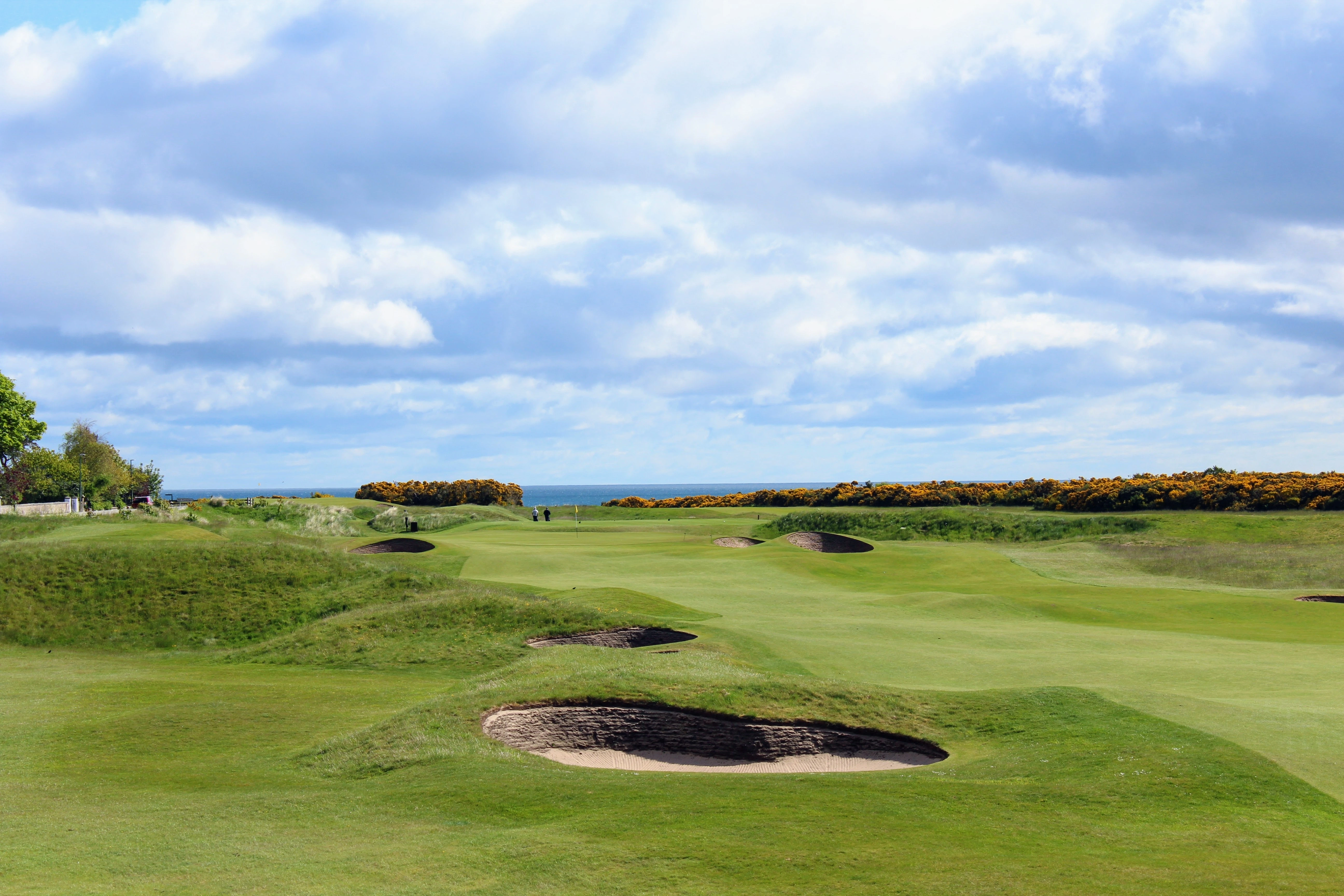Let’s start with this. It’s not the “British Open.” It’s The Open Championship. The original. The oldest. The granddaddy of them all.

The confusion is understandable—other countries prefix their national Opens with geographic identity: the U.S. Open, the Australian Open, the Canadian Open. But The Open needs no such introduction. It was the first, born in 1860, and it carries that singular title with pride. To those who understand the soul of golf, calling it “The British Open” is like calling Wimbledon “the British Tennis Tournament.” It misses the essence.
The Open is golf in its rawest, purest form. It’s played on links land—not parkland, not desert layouts, not manicured resort courses. No, links. Let’s talk about what that really means.
What Is a Links Course?
“Links” isn’t just a stylistic term. It refers to a very specific kind of land found in coastal areas—sandy, undulating, wind-swept terrain that lies between the sea and arable farmland. It’s where golf was born.
Unlike modern layouts sculpted by bulldozers and irrigation systems, links courses were shaped by nature. These courses weren’t built—they were discovered. The fairways twist and turn around dunes, heather, marram grass, and pot bunkers, all dictated by the land itself.
They’re not artificially green. They can be brown. They’re not soft. They’re firm and fast. They don’t play up into the sky. They play low, they bounce, they roll. They invite creativity, not just power. They ask players to think, to feel, to adapt.
That’s links golf—and that is The Open Championship.

More Than Just a Major
The Open is one of golf’s four majors, but it’s the only one played outside the United States. It stands apart not just in location but in character.
It’s a tournament steeped in tradition and humility. Players don’t arrive with entourages of swing coaches and data analysts and 4-camera launch monitors parked behind every range mat. They arrive with respect. Respect for the game. Respect for the history. And respect for the brutal honesty of the courses they’re about to face.
The Open doesn’t yield to modern golf’s obsession with control. It laughs at it. While so many tournaments are won with high, soft, soaring approach shots that land like darts and stop dead—links golf asks something different.
The Open demands shot-making. It asks players to flight the ball low under the wind. To read humps and hollows 30 yards short of the green. To run it up, to punch it in, to find fairways that are anything but flat. You use every club in the bag. You think about carry and roll on every shot.
It is chess, not checkers.
The Weather—The Great Equalizer
Nowhere does weather play a bigger role than at The Open. At Royal Birkdale, Carnoustie, Muirfield, and of course, the iconic St Andrews—you can tee off in sunshine and finish in sideways rain. It’s golf’s version of four seasons in a day.
In no other tournament is the luck of the draw so apparent. Tee off early and you might get calm skies and sunshine. Tee off late, and you might be in a gale. Winds off the Atlantic, rain sweeping sideways across the fairways, cold air that adds 10 yards to every club. It’s the only major where an umbrella might be as essential as a driver.
Some say that’s unfair. I say it’s life. And golf is a game of life.

Royal Portrush 2025 – A Proper Test
This year, The Open returns to Royal Portrush in Northern Ireland. It’s a course of spectacular natural beauty, set high above the crashing waves of the Atlantic. It last hosted The Open in 2019, when Shane Lowry lifted the Claret Jug in front of adoring Irish crowds. That week, Portrush shone.
But make no mistake—Portrush is no pushover.
The Dunluce Links is one of the greatest tests in the world. Rugged, unpredictable, and brutally honest, it brings everything we love about The Open into focus. Elevation changes. Blind tee shots. Small plateaus that act as landing zones. Devilish bunkers that turn eagles into doubles.
And the weather in Northern Ireland? It’s as Irish as it gets. If you don’t like it, wait 15 minutes—it’ll change. But Portrush has something else. It has spirit. Irish golf fans are knowledgeable, passionate, and fair. They cheer for artistry. They respect all players. It’s not about noise—it’s about appreciation.
One Tee, One Test
Here’s another thing I love. The Open doesn’t split tee times between the 1st and 10th. Every single player, from the first group at dawn to the last group at dusk, starts from the same place: the 1st tee. That means long days and changing conditions. A golfer might see four seasons in a round—and the leaderboard can change not just from birdies and bogeys, but from wind shifts and sudden showers.
It adds a layer of unpredictability and depth. It adds drama. And it adds integrity. Everyone faces the same journey, beginning to end.
Tradition, Yes—But With Surprises
One of the most beautiful things about The Open is its ability to surprise us. We’ve seen the legends: Jack, Tiger, Faldo, Watson. But we’ve also seen the unexpected: Paul Lawrie in 1999, Todd Hamilton in 2004, Ben Curtis in 2003.
The Open, more than any other major, gives the underdog a shot. It’s not about who hits it the furthest or who looks the part. It’s about who can handle the conditions, think their way around, and make the fewest mistakes.
It’s the fairest unfair test in golf. And I love that about it.
A Personal Connection
I’ve been fortunate enough to walk the fairways of The Open, not just as a fan, but as a coach. In 1995 at St Andrews, I was coaching Michael Campbell—and for the first three days, he led the field. There we were, at the Home of Golf, watching this young man from New Zealand take on the world.
We felt the roars. We felt the nerves. We felt the history under our feet. It’s a week I’ll never forget.
St Andrews, by the way, is not just any course. It’s the only one where you can still play it backwards. The double greens are so massive, you could have a putt over 100 yards. It’s quirky. It’s historic. It’s sacred.
The Champion Golfer of the Year
Every year, The Open ends not with fireworks, not with walk-off putts and champagne sprays—but with a simple, powerful announcement:
“And now, presenting The Champion Golfer of the Year…”
Not “winner.” Not “title holder.” Not “major champion.”
The Champion Golfer.
It’s a title that carries weight. Gravitas. Legacy.
Looking Ahead to 2025
As we look ahead to the 2025 Open Championship at Royal Portrush, let’s embrace everything that makes this event the crown jewel of golf:
• The challenge of links land.
• The test of shot-making over showmanship.
• The drama of the weather.
• The roars of respectful crowds.
• The honor of holding that Claret Jug.
This is more than a tournament. It’s a celebration of everything golf should be—humble, unpredictable, brilliant, and rooted in tradition.
For me, The Open is the heart of golf. It’s where the game reveals its soul.
So, here’s to Royal Portrush. Here’s to every competitor who dares to face it. And here’s to the moment we all await…
When the announcer, in that unmistakable tone, declares:
“And now, presenting… The Champion Golfer of the Year.”
May it be a week of joy, drama, and unforgettable golf.
Long live The Open.
